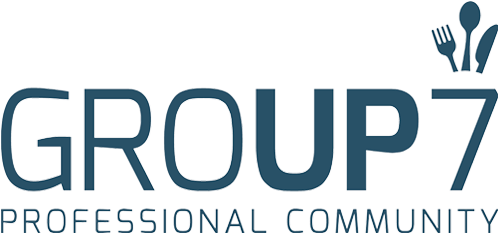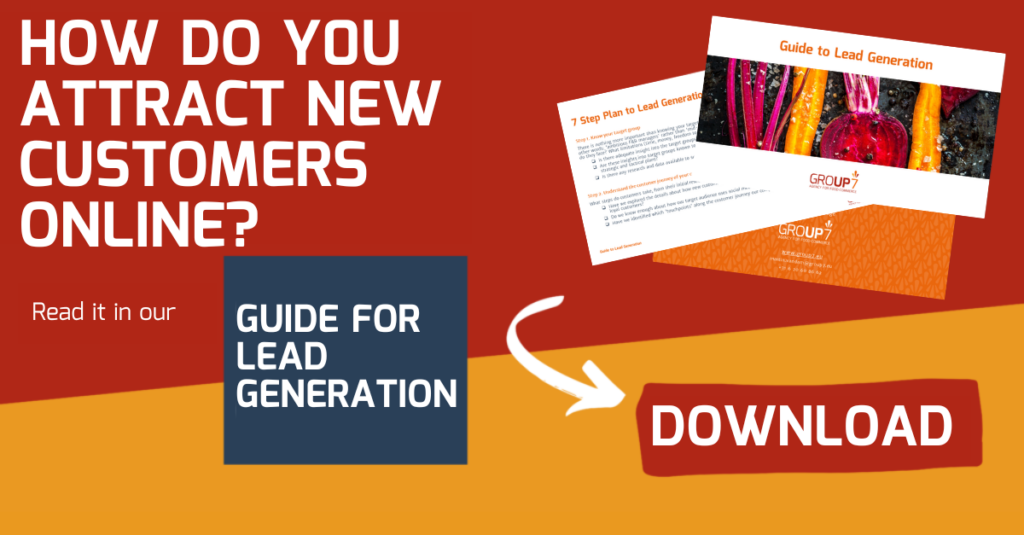Imagine what it would be like to have a database full of customers you have actual information about. To have a contact page in your CRM system where all the boxes are filled in. How much easier would it be to make marketing relevant to your customers if you had insight into their complete profiles?
Of course, this paints a picture of an ideal situation, but it is by no means impossible. In this article, I explain how you can achieve this ideal situation and the steps you need to take to do so.

Step 1: Target a specific audience
There is nothing more important than knowing your target audience. For that, we use customer personas. When you develop a customer persona, you are bringing together the knowledge already present in your company, in the marketing department and with your sales representatives in order to create a fictional person.
Engaging with that person helps you send out messages that are proven to be more effective. That means you can develop a better tone of voice, improve your word choice and make more powerful proposals. It allows you to start using your message in the most relevant way possible. It’s actually a very familiar concept – in person you also speak differently to an 80-year-old woman than you do to a 5-year-old.
Make sure to specifically address each target audience (persona). You will notice that this approach is significantly more effective.
We’ve written an interesting blog about this. Click here for more information. You can also download a persona template that you can start working with right away

Step 2: Turn visitors into repeat customers
Now it’s important to ask yourself the following question: “How do I turn that visitor into a customer?”
The best approach is not to try to make a sale straight away from the very first contact. Work step by step towards your sales goal. With that in mind, it’s a good idea to briefly explain the sales funnel. Below the image you will find an explanation for each phase.

Trigger phase:
Visitors that come to your website are also called leads. These aren’t ordinary contacts. They are people who have demonstrated an interest in your product or service by visiting your website.
In this phase, you try to trigger leads into clicking on certain actions on your website, allowing you to find out what they are interested in.
Engagement phase:
When you find out what they are interested in, this is then known as a marketing qualified lead. In other words, marketing can now start following up on this lead. You could consider offering whitepapers, webinars, a trial package, sending newsletters and much more. The objective of this phase is uncovering what they are interested in more specifically.
Nurture phase:
In this phase, you are warming up your leads to eventually make a purchase. What you are doing is monitoring the lead’s behaviour, following up and trying to convert them to sales. We also try to look at the lead’s state of mind in this phase.

Remember that leads will often know very little about your business category. Let’s imagine you sell sustainable disposables. Many visitors to your website will not be very familiar with these products. You will first have to explain to them (1) what problem these products solve, (2) what solutions you offer and (3) what the associated products are.
Prospect:
Prospects are potential customers. You only start selling when your customer is ‘ready to buy’. In this phase, the sales representative plays a leading role. This is because the prospect has found something about your products or services that they think is worthy enough to leave their details for. It would be wise for sales to follow up with this person. This can be done by phone if a phone number is available, or otherwise by organising a visit.
Customer:
The ultimate goal is to convert the prospect into a customer, to keep them committed to your company for several years.

Step 3: Use forms for customer data
The power of having a form on a website is often underestimated. There are several different ways of incorporating forms.
- When offering a trial package.
- When downloading a leaflet.
- When offering a whitepaper.
- When sending a newsletter.
- When conducting a survey.
- When setting up your contact page.
And there are plenty of other options like this. If you are working with a CRM or marketing automation system, it’s good to know whether all that data from the form is being automatically loaded into your system. Asking the right questions on your integrated form, for example, can help you automatically complete the profile of your lead, prospect or customer.

Step 4: Personalise your content
Now you may be thinking to yourself: sure, forms are great, but how do I actually get people to fill them in? Earlier in this article, I talked about the different phases in a funnel and how to trigger interest during the various phases. I explained that you need to consider the customer state of mind to see how best to nurture the contact.
A next step would be to personalise the content. This makes a lead, prospect or customer feel like they are being addressed personally, making them more likely to take action. You’ve probably experienced it yourself, you receive an email where the subject of the email contains your name. Your eyes automatically move to that email.
But you can also personalise it based on interest. This can be done by grouping together different types of leads, prospects or customers according to their interest, and sending content accordingly. This allows you to position yourself better. It also means that your lead, prospect or customer knows that when they get a message from you, it will be relevant to them. This will also ensure a higher open rate than if you send the same emails to everyone.


Step 5: Good things take time
A process like the one described above takes time. It is a core part of your content and lead generation process. Understanding and maintaining a CRM system or marketing automation is a full-time job. We understand that better than anyone, because it’s what we’re busy with every day.
Summary:
This article has discussed 5 steps:
- Know who your target audience is
- Transform visitors into customers
- Recognise the power of forms
- Personalise the content
- Good things take time.
If this blog has inspired you to discuss your situation further, please feel free to contact us. We may be able to give you a few tips to help you get started on this.
Request our Guide to Lead Generation with the handy 7-step plan now. These practical steps will help you make lead generation easier, faster and more successful in your organisation.



